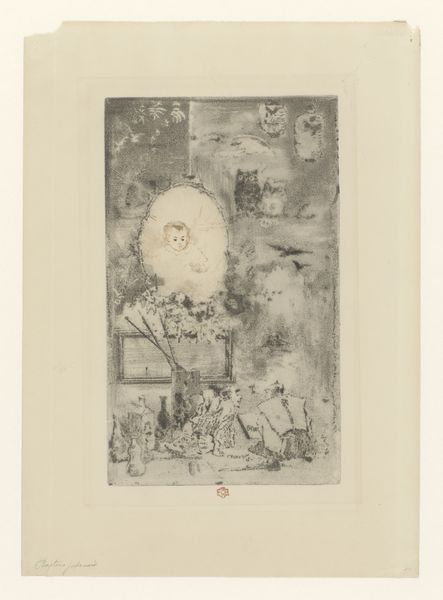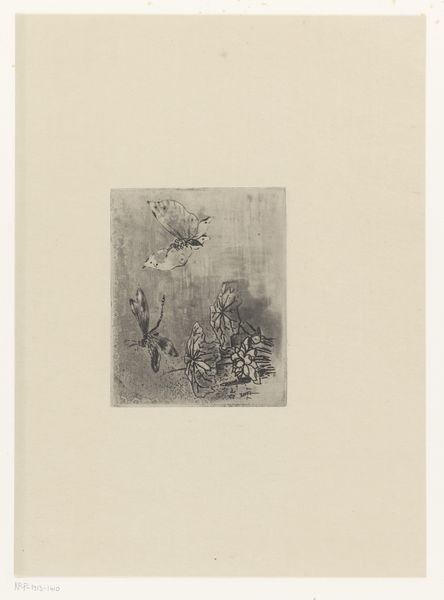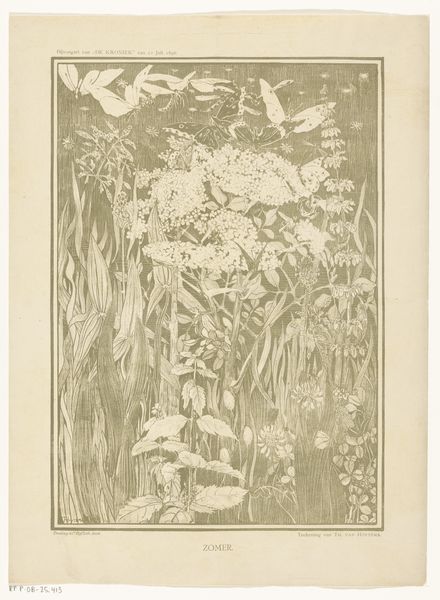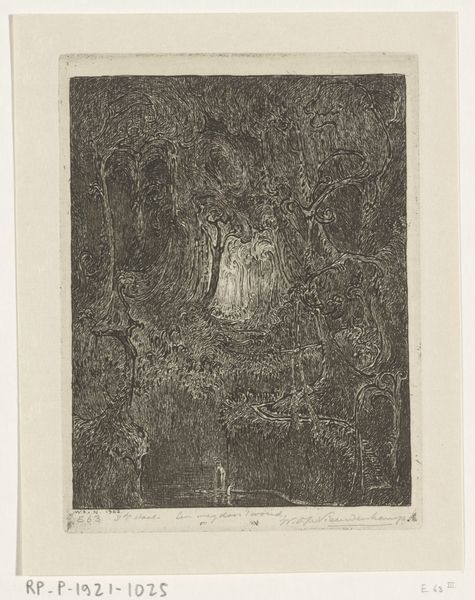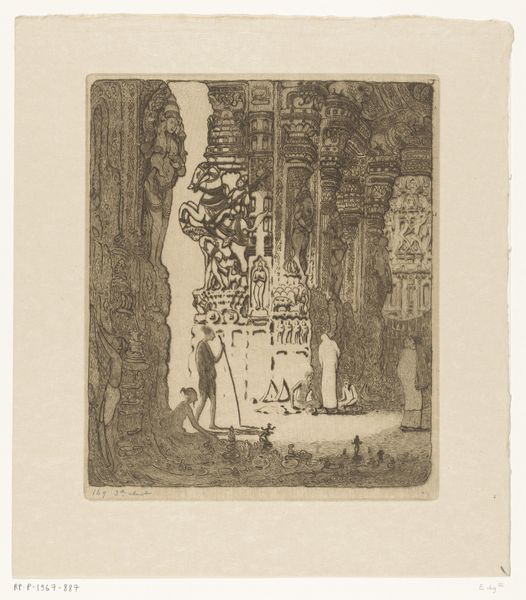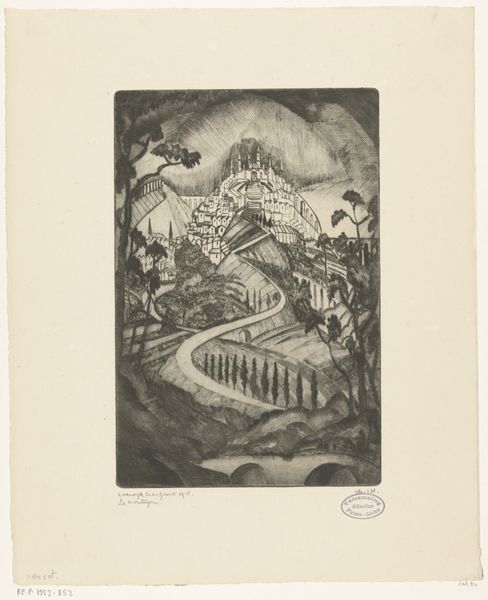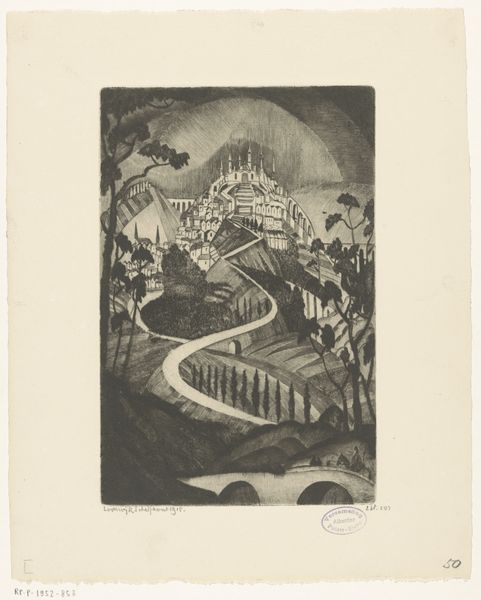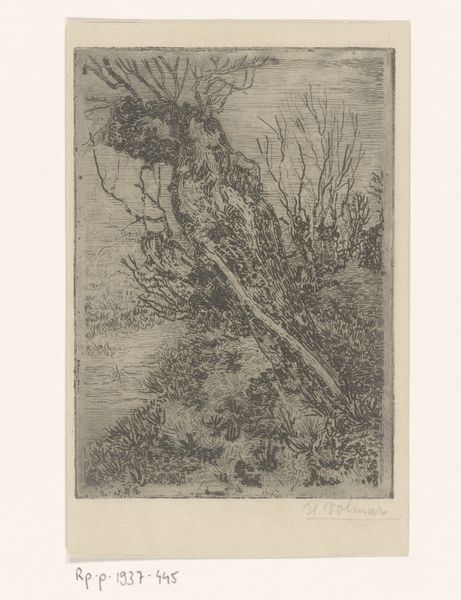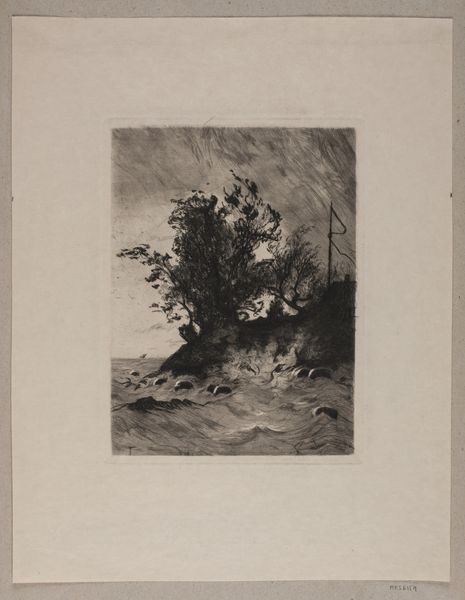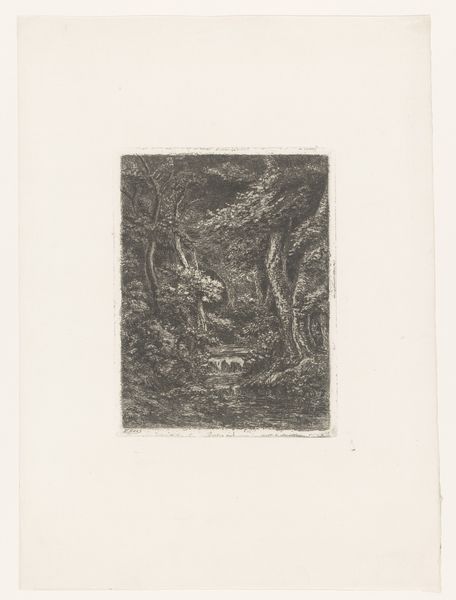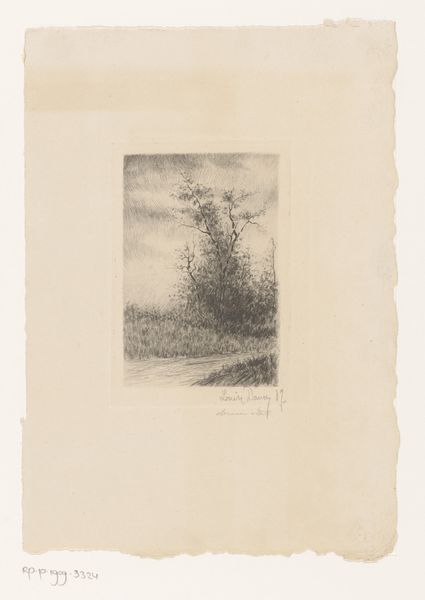
print, etching, paper
# print
#
etching
#
asian-art
#
landscape
#
paper
#
geometric
#
orientalism
#
line
#
realism
Dimensions: height 700 mm, width 584 mm
Copyright: Rijks Museum: Open Domain
Editor: This is "Pagode in de Regen," or "Pagoda in the Rain," an etching by W.O.J. Nieuwenkamp, created in 1918. The rain gives everything a somber mood. What is your interpretation of this piece? Curator: It's more than just rain; it's about a colonial gaze. Nieuwenkamp, a Dutch artist, portrays an Asian landscape. What power dynamics are at play when a European artist depicts an 'exotic' locale like this? The 'orientalism' is undeniable. Editor: I see. So, it's not just a landscape, but a statement about cultural perception? The pagoda is certainly the focal point... Curator: Precisely! The pagoda, a symbol of spiritual and cultural significance, is reduced to an aesthetic element in a scene constructed for Western consumption. Notice how the "primitive" huts are set against the towering "civilized" pagoda. How does this visual hierarchy reinforce colonial narratives? Editor: That’s fascinating, I didn't initially consider that angle. I was just focusing on the aesthetic appeal. Curator: Many viewers initially do. But consider the context: early 20th century, height of European colonialism. Artists like Nieuwenkamp were, consciously or unconsciously, complicit in perpetuating stereotypes. This landscape becomes a form of cultural appropriation. Does that resonate with you? Editor: Yes, definitely. So looking at art is never neutral? Curator: Never. Art is always entangled with power, ideology, and historical forces. It prompts us to consider whose stories are told and how, urging conversations about historical, societal, and cultural dynamics. This artwork reveals those dimensions. Editor: I'll never look at landscapes the same way again. Thanks for illuminating that. Curator: And I appreciate you for keeping that space for questioning our ways of seeing.
Comments
No comments
Be the first to comment and join the conversation on the ultimate creative platform.
